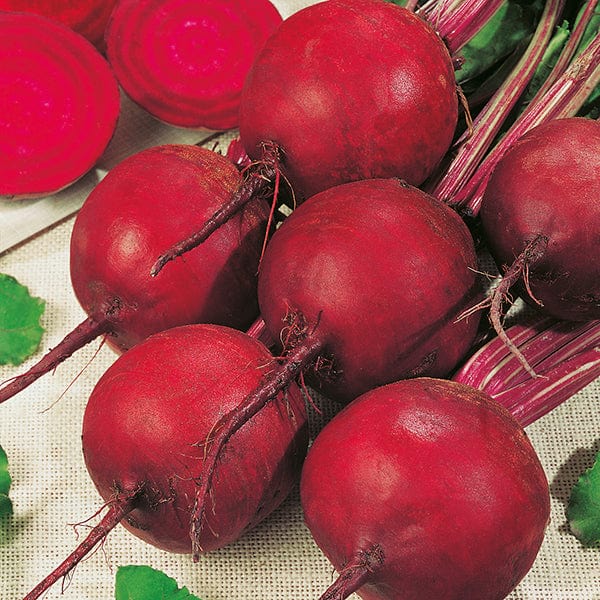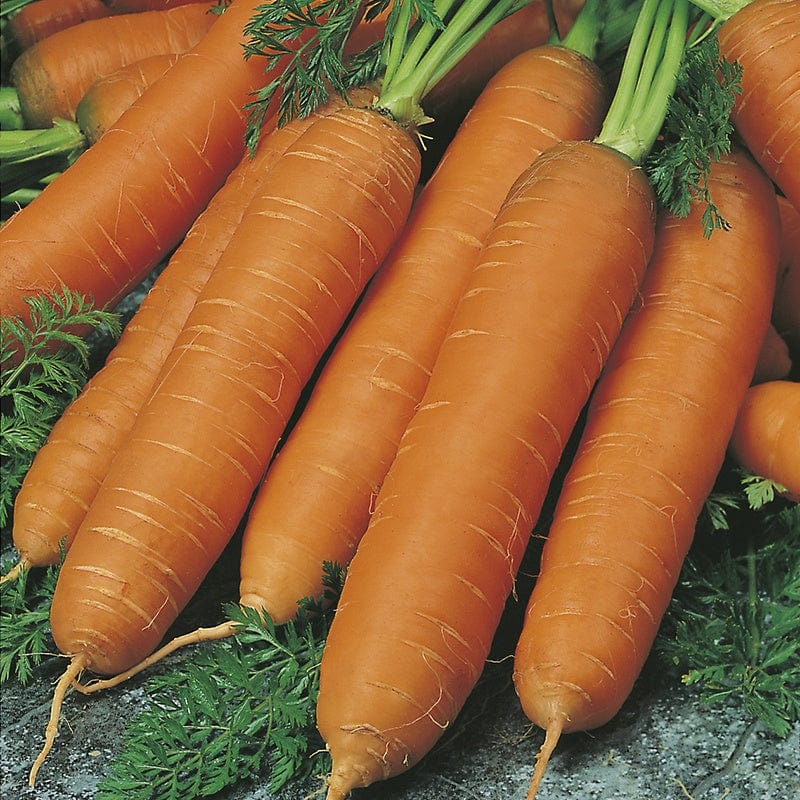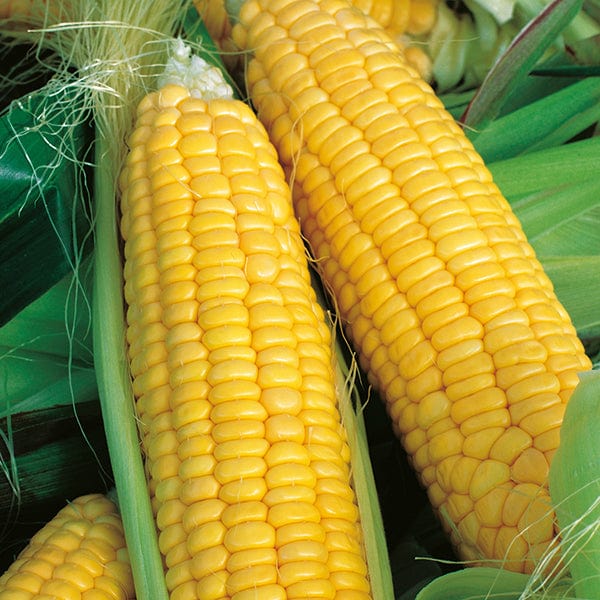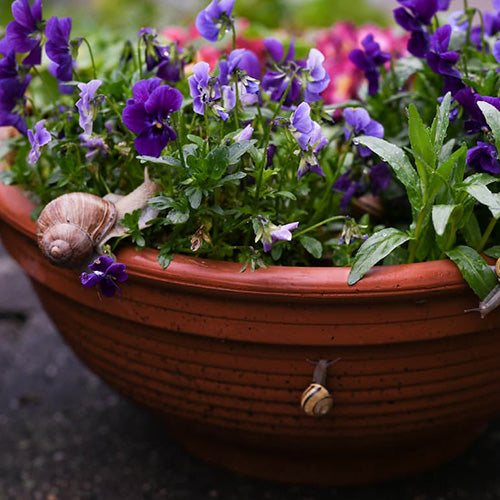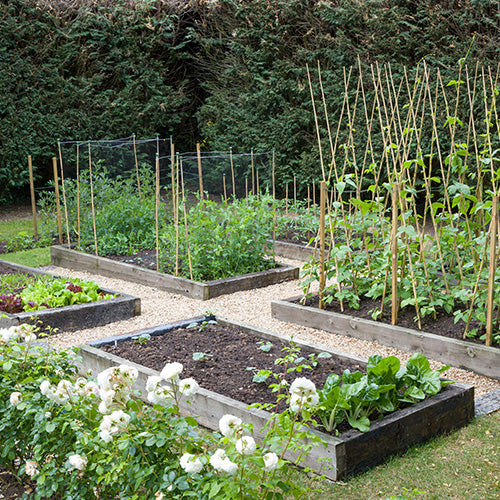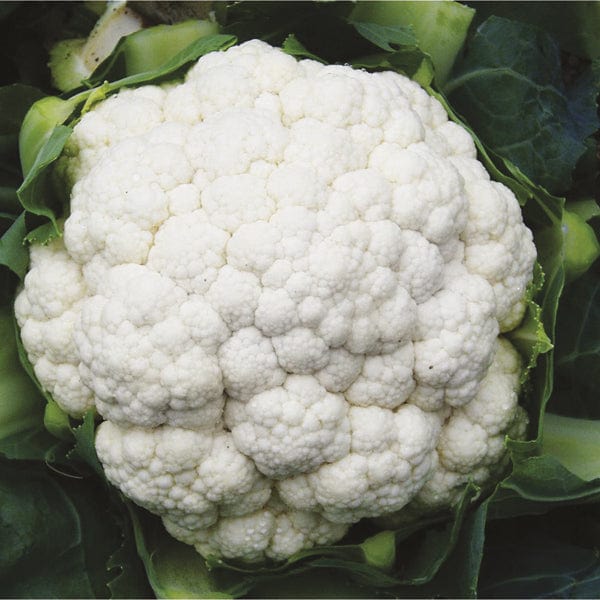Slugs can be a big nuisance when tending to your plants and crops, and require proper methods of control to keep your garden free of them. To help protect your garden, we’ve put together a guide on how to get rid of slugs in your garden to keep your growing space pest-free.
What slug killer should I use
The most effective way when looking for ways of how to get rid of slugs in your garden is to use slug killer. There are many reliable methods of slug control to choose from, though we recommend using slug control nematodes for many reasons, which we explore below.
Frequently asked questions about nematodes
What are nematodes?
Nematodes are microscopic worms that seek out slugs, stop them from feeding on your plants within three days and then kill them. Nematode pest control is highly effective if you are searching for methods on how to get slugs to stop eating plants.
Why use nematodes?
Nematodes are an effective alternative to chemicals. They are safe and harmless to children, pets, birds, and wildlife.
How do I apply nematodes?
Nematodes are applied very simply using a watering can with a coarse rose. The full instructions are on the pack and can also be found online. Application of the standard pack usually takes 30 to 40 minutes. It is important to use the correct amount of water during application to ensure the nematodes are washed into the soil and give an even application.
When can I apply nematodes?
Nematodes can be applied at any time when slugs are present, as long as the soil temperature is 5°C (40°F).
What happens if the temperature falls after I have used nematodes?
The control may be a little slower. However, nematodes are capable of surviving even the odd frost.
What will nematodes control?
Nematodes will control all common species of small to medium-sized slugs up to 8 cm (approx. 3 inches).
How long do nematodes work?
One application of nematodes will provide at least six weeks of control of slugs, making them a great method when looking at how to get rid of slugs effectively.
Are there any special precautions?
The only special precaution for nematodes is applying them near ponds, as they might affect water snails. To avoid this, keep the treatment 15cm (6 inches) away from ponds.
Can nematodes be used on clay soils?
Nematodes can be used on clay soils that have been well-worked with other organic materials. Do not use them if the area you wish to treat is waterlogged or has very heavy wet clay.
Are nematodes harmful to anything else?
Nematodes are harmless to other wildlife, pets, birds and children.
Are any special conditions required?
Nematodes should be applied to moist soil. If applying in hot weather, it is better to wait until later in the day when the soil won’t dry out so quickly and the nematodes will have a chance to migrate under the ground during the night.
Will nematodes be washed out of the soil during prolonged wet weather?
Unlike some other slug control methods, nematodes are particularly effective in wet weather—exactly when you need protection against slugs when they’re at their worst!
Is there any benefit from applying nematodes in the autumn?
If you apply nematodes in the early autumn, you will reduce the number of slugs laying eggs and consequently reduce the new population emerging in the spring.
When is the best time to apply nematodes to protect my potatoes against slugs?
The best results are obtained by applying nematodes 6 to 7 weeks before harvest. This is when the tubers are most vulnerable to slug attacks.
What happens if the temperature falls after I have used nematodes?
The control may be a little slower. However, the nematodes are capable of surviving even the odd frost.
Can I water nematodes directly onto plants?
Nematodes live in the soil, so it is better to apply them to the soil if you can. However, if this is impossible because of dense foliage, wash them off into the soil with some extra water after application.
Can I eat produce that has been treated with nematodes?
Yes, just wash your fruit and vegetables in the normal way.
Can nematodes kill snails?
Nematodes can kill snails, and many retailers sell them for that purpose. However, nematodes live under the soil and snails tend to stay on the surface, so they don’t come into contact with them very often, making them an ineffective form of pest control. They do have a slight effect on small snails, as they remain under the soil for longer.
Why use nematodes?
When looking for effective methods on how to get rid of slugs in your garden, many common methods come with some hindrances. Most slug killers are applied to the surface of the soil. Contrarily, slugs spend most of their time underground, coming up at night to feed. Sometimes they won’t come up at all if they can feed on potatoes and newly planted seeds as they germinate.
Most slug pellets contain metaldehyde, which irritates the slug and causes it to produce more mucus, leading to death by dehydration. However, slugs can lose up to half of their body weight by dehydration but can still recover within two hours of exposure to water.
Some slug pellets contain methiocarb. This chemical is a non-selective carbamate that acts as a stomach poison and is generally more toxic to other organisms, such as birds and hedgehogs.
Slug pellets can provide good localised control at the point of application but are less effective during wet weather, and there are increasing concerns about the effects of these chemicals on wildlife and pets.
There are also various barrier and capture methods, some of which work better than others. However, they nearly all rely on the slugs being above ground to be effective.
Nematodes are a simple solution for slug control in your garden that is safe for children, pets and wildlife.
A regular regime of using nematodes every six weeks is the best way when thinking of how to get rid of slugs in your garden throughout the growing season.
Nature’s allies in slug control
Don’t forget that using nematodes will not harm wildlife, so will work in harmony with nature.
Many songbirds thrive on a slug diet; therefore, you can make your garden attractive to them by providing nest boxes and areas of dense shrubbery (shelter for them to escape from their own predators, like sparrow hawks).
Hedgehogs love feeding on slugs at night. A favourite resting place is the compost heap, so take care when moving your heap and check that there are no hedgehogs.
Frogs and toads have a high dependency on slugs in their diet. Providing a garden pond helps to encourage them into your garden.
Some insects are also important predators of slugs, for example, ground beetles. As ground beetles feed on slug eggs, they can reduce slug populations before they have inflicted any damage whatsoever. To encourage these important insects, you should provide areas for them to shelter, like logs and stones scattered around the garden and possibly under bushes.
Delivery and storage
Our nematode products are dispatched using Second Class Post every Monday; we do this to avoid packs being held in depots and sorting offices. The packs should fit through a standard letterbox, and no signature is required.
Storage
If packs are left in a warm environment, their effectiveness may be impaired. So as soon as you are able, remove the pack from its mailing envelope and place it in the fridge (don't freeze). It is good practice to use packs promptly; however, there is a use-by date on each pack, and nematodes can safely be refrigerated up to this date. The date is typically four weeks from manufacture, so allowing for transport and dispatch times, you should have about three weeks in which to use the pack. If a pack is ever left out of refrigeration for a long period, then please use it immediately.
Using nematodes
Treatment area and preparation
Our slug control nematode products come in two pack sizes, Slug Control Nematodes 40m² and Slug Control Nematodes 100m². If you have a larger area to treat, you can use multiple nematode packs, but it is best to apply each pack of nematodes individually. If the area is smaller, then a stronger dose won't hurt, or you could treat an adjacent area.
There is an important difference between metres squared and square metres. To put it simply, a large 100m² pack will treat an area that measures, for example, 10m by 10m. If you are treating a very large area, then try marking sections off with a garden hose and treating each with a measured dose of nematodes.
You should try to clear any debris, gravel, membrane, foliage or fallen leaves. Nematodes need to be applied directly to the soil. It will be absorbed into the ground much more readily if the soil is moist, so water first or wait for a damp day. Evaporation can also affect the application, so it is best to avoid very bright or windy conditions. If you do apply through foliage, then wash the treatment from the foliage to the soil with extra applications of water.
Nematodes should be applied to soils that are at least 5°C. They will survive the odd frost, but applying them to hard frozen ground or prior to a long cold spell will render nematodes ineffective. A soil thermometer is a great investment.
Application methods
Follow the instructions on the pack; they will be up to date and incorporate any changes. There are two main methods of applying nematodes: with a watering can or with a garden hose fitted with a hose-end sprayer. Please note that nematodes may kill water snails, so if you have a pond or watercourse, avoid applying within 15cm.
Watering can method
The watering can should be fitted with a coarse rose. When the nematodes are mixed with water, the solution is very fluid. However, a fine rose will quickly block, leaving all your nematodes in the watering can and none on the treatment area.
Follow the instructions on the pack, which will vary depending on the size of the pack you have purchased. For the 40m² pack, you will divide the contents into quarters, so it is best to do this out of the wind. You don't need to be totally precise but try to make the quarters even. Each of these quarters should be mixed into 8 litres (2 gallons) of clean water in a watering can. Stir well to mix, then apply immediately. You apply each quarter in turn before mixing the next.
For the 40m² pack, each watering can (each containing a quarter of the pack) will treat 10m². Know in advance where your 10m² area is. Consider having a 'dry' run first with clean water so you know what pace to walk at to ensure an even application of nematodes. Use the whole pack and don't store made-up solution. Please refer to the pack for the correct application rate and dilution. Applying nematodes is very simple, safe and clean.
Garden hose and feeder
When treating very large areas, it may be quicker to apply nematodes using a hose pipe and feeder.
Whichever method you use to apply nematodes, it is good to re-water everything following the application. A good soaking will help the nematodes penetrate the soil. If possible, keep the ground watered throughout the treatment period. Once the nematodes have started moving through the soil, they will be less vulnerable to surface effects.
Getting results
Nematodes will not kill a slug instantly on contact. They need to infect the slug; this may take a few days, and the slug will then stop feeding and die. Large slugs, above about 8cm, are less vulnerable to nematodes. Most slugs, and certainly juvenile slugs, are active below the surface, so nematodes are very effective at stopping a slug problem from developing in the first place. Slug pellets can be used alongside nematodes, should you feel the need.
Reapplying
Depending on soil and weather conditions, a single treatment of nematodes will be effective for six weeks. It is a good idea to apply at the start and end of the season (March/April and October/November) to kill off early generations and those over-wintering for the following season. A full season's continuous treatment would take 6 x 6 weekly applications, which is 6 packs in total (depending on the area treated). You should get nematodes delivered when you need to apply to ensure they are fresh.
Gardening Advice from D.T. Brown Seeds
We hope this guide on how to get rid of slugs in your garden has helped you to understand the benefits of nematodes. If you’re looking for more tips to keep your garden healthy and thriving, you can find all of our best advice in our gardening blog. You can also find a diverse collection of quality vegetable seeds, vegetable plants, tools and accessories, and everything you need to keep your growing space at its best.
If you’d like to ask us about our slug control products or anything else from our range, feel free to get in touch with any questions. A member of our team will be more than happy to help.



